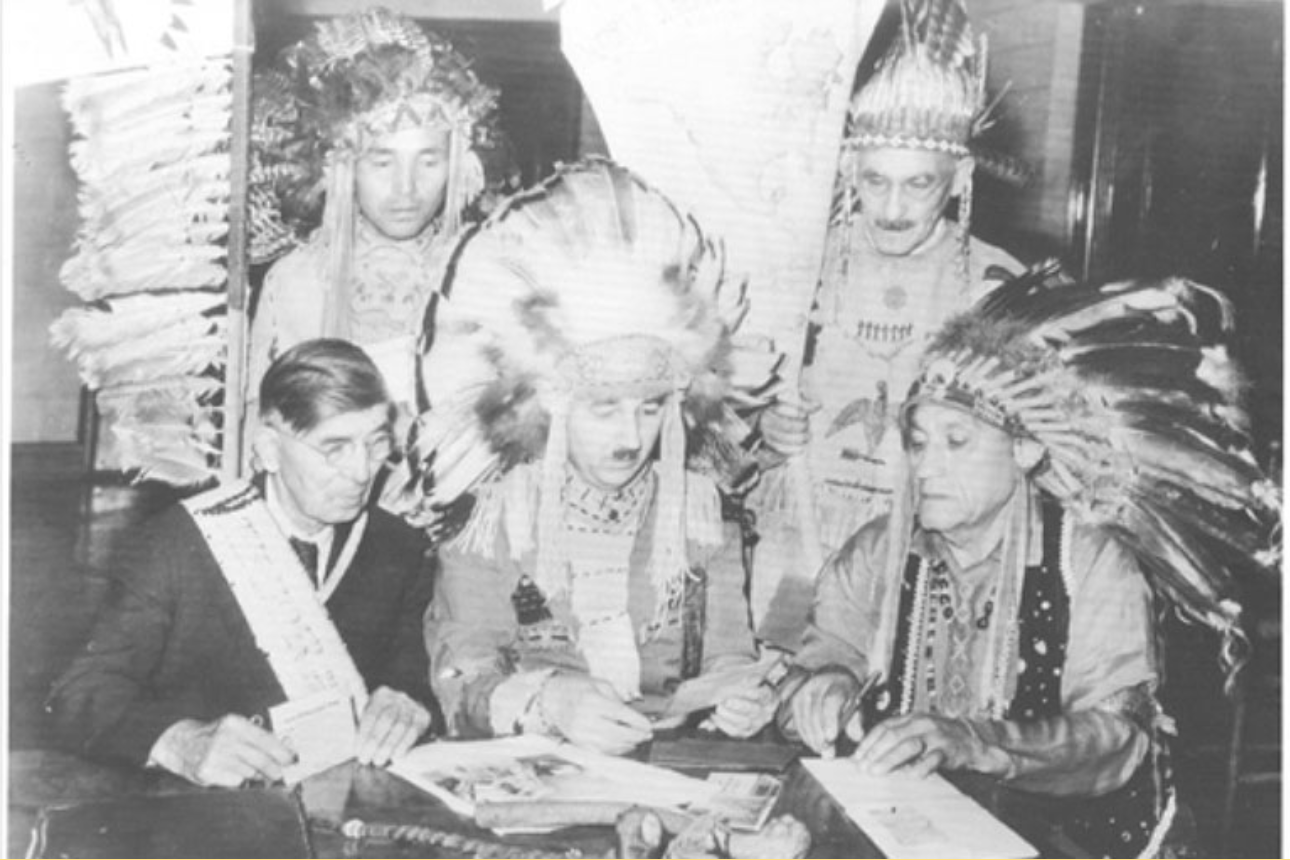Mononk Jules: 4 biographical and historical facts


Mononk Jules is a documentary play in the form of a solo performance by the author, actor, and puppeteer Jocelyn Sioui. In this work, the artist shares the story of his great-uncle, Jules Sioui, a forgotten Indigenous hero. Surrounded by screens and boxes that he opens and transforms to present archives, models, and puppets, he tells the story of Jules Sioui, who appears in all his glory, but also in his darker aspects. Here are some biographical and historical facts to help you prepare for the show.
-
Who is the artist Jocelyn Sioui?
Jocelyn Sioui is a member of the Wendat community. Creator and organizer, he is a member and co-founder of Belzébrute, a theater group. Author, designer, and performer of the shows Shavirez, le tsigane des mers (2008), Manga (2011), and Mr P (2013), he has performed throughout Canada and France, where audiences praised his works. The originality of his approach has earned him numerous awards, including the Grand Jury Prize at the OFF/World Festival of Puppet Theaters in Charleville-Mézières 2013 for his show Shavirez. In addition to being a puppeteer, actor, and author, Jocelyn is the founder and director of the OUF! Off Casteliers Festival, a festival devoted to puppetry arts, which has become one of the largest gatherings of puppeteers in Canada. He is one of the very few Indigenous puppeteers in Quebec.
-
Jules Sioui, Jocelyn’s great-uncle and Indigenous hero
The Wendat activist Jules Sioui (1906-1990) was often called a great hero of First Nations self-determination. Indeed, Jules Sioui was the founder of the Assembly of First Nations and led a tireless battle against segregation towards Indigenous peoples. He defied public powers and was accused of being the initiator of civil disobedience movements, which led to him being imprisoned several times. But neither detention nor deprivation frightened him. Sometimes even resorting to hunger strikes, Jules Sioui defended the rights of his people and denounced the political system and the government’s assimilation project for Indigenous people. “Believe or die” was his motto!
“He did great things, but as in a Greek tragedy, it never ends well for the heroes for all kinds of reasons”, declares Jocelyn in the show. “And I think that that is Mononk Jules. His fight was forgotten, but he did create a lot of change in his time. Residential schools, segregation… History is ugly, but it’s not because it’s ugly that it shouldn’t be told.”
-
The “Indian Act”
Did you know that the “Indian Act” placed Indigenous peoples under the guardianship of the state and considered them as children? Enacted in Canada in 1876, this law, formerly known as the “Act of the Savages,” aimed to administer the status of Indian, the local governments of First Nations, and the management of reserve lands. Subject to changes without notice and, of course, without the agreement of the main stakeholders, this law concerned only those who held Indian status (registered Indians from First Nations), and not Métis or Inuit. Despite this, Métis and Inuit had to comply with it as well as registered Indians. This law also defined the government’s obligations to members of First Nations, but the purpose behind all of this was undoubtedly to control, assimilate, and destroy Indigenous culture.
-
What is the Truth and Reconciliation Commission?
The Truth and Reconciliation Commission was officially created in 2008 to hear, receive, and become aware of the terrible stories experienced by Indigenous children who stayed in Canadian religious schools. Its goal is to launch a reconciliation process that allows Indigenous peoples and the Crown (which represents Canadians) to work together to establish and maintain a common living framework based on mutual respect, and to improve the quality of life of Indigenous peoples. On September 30, 2021, on the first National Day for Truth and Reconciliation, we paid tribute to the missing children and survivors of the schools, their families and communities.
Did you know that the color orange worn on this commemoration day is in honor of Phyllis Webstad? At the age of 6, Phyllis was taken from her Stswecem’c Xgat’tem First Nation community in British Columbia and sent 80 km away from her home to a school in Williams Lake. On her first day of school, school officials confiscated the orange shirt her grandmother had given her to make her wear a uniform. The orange shirt has now become a symbol of the dispossession of culture, freedom, and self-esteem experienced by Indigenous children for several generations.
About the theatrical adaptation and techniques:
Jocelyn Sioui first wrote the biographical narrative Mononk Jules, published in 2020 by Éditions Hannenorak, before adapting it for the stage. She integrates various theatrical styles such as monologue, puppetry, shadow theatre, video projections, etc. Mononk Jules is a documentary theatre performance, a form of theatre that deals with political or social, historical or contemporary events, based on reports, accounts, interviews, and legal or historical documents. Although these authentic materials are generally presented as is on stage, without altering their nature, it is a fictional form of art.
Mononk Jules will be presented at Studio 16 in Vancouver from February 22 to 25, 2023. Come discover this work that sheds light on a part of the still too little-known history of Indigenous peoples in the 20th century. More information and tickets are available on the show’s page.
